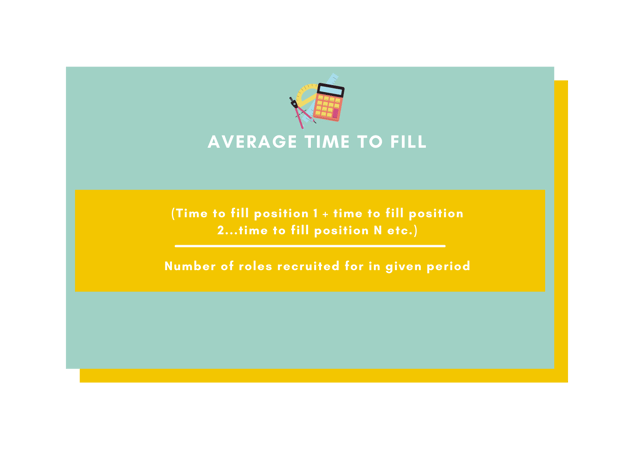Time to Fill - What is it?
Time to fill is one of the most important and widely used metrics in recruiting and HR, and this reigns true across industries, competitors, and roles. Time to fill generally refers to the time it takes for the entire hiring process for a position, all the way from requisition to acceptance. Simply put, it captures the time between the eventual hire entering the talent pipeline to the time they accepted an employment offer, or the number of calendar days it takes to find and hire a new candidate.
The starting point from which organizations choose to measure time to fill varies. If it isn’t an improved job requisition, it might include:
- Publishing a job post
- A hiring manager submitting a requisition for approval
While the starting point varies, the important thing is to standardize the start-point at your organization.
Why is time to fill important?
Time to fill is a very important HR metric that impacts an organization’s bottom line. It’s primary uses come in the form of business planning and HR process optimization.
This makes sense - just think about the costs and headaches associated with vacancies for key positions. If you don’t have a manager in place, others have to take on extra responsibilities which can lead to, just to start, burnout and higher absenteeism rates and trickle down to the rest of the organization.
Measuring time to fill is therefore of the utmost importance for HR teams and is unsurprisingly present on any strong people analytics dashboard for HR teams. It helps with, as we mentioned, business planning as it offers realistic timelines around how long it will take to replace employees or expand teams, and can be a warning of a need for improvement if the entire process is taking too long. Measuring time to fill helps you:
- Plan better: as you can better understand your processes and performance and plan future activities accordingly
- Identify and remove inefficiencies: which roles take longer to fill? Which sources of new candidates are the most effective? Answers to questions such as these can come from time to fill analysis and help to improve processes.
- Reduce costs: understanding your time to fill can help you reduce costs associated with job advertisements, vacancies, and burnout.
How to measure time to fill?
The calculation for time to fill varies, as mentioned, between companies, so make sure to adjust as is contextually appropriate for you.
First, determine the starting point (typically when a requisition is approved). Then calculate the number of calendar days between this point and the date that a candidate accepts the job offer (similarly, your end point could vary and instead be a candidate’s first day at the new job).
To calculate your average time to fill, which can be analyzed by department, job function, or at the organizational level, calculate the time to fill for each position, add those times together, and divide by the number of roles recruited for in that time period. The formula would like something like this:

Measuring time to fill across roles and departments makes sense because, for example, average time to hire differs drastically between technical teams and sales teams. Therefore, segmentation gives you a more accurate measure of where you stand.
SHRM came up with a report that benchmarks average time to fill which is generally about 36 days. Check it out for more granular information.
What’s the difference between time to fill and time to hire?
You may have heard the terms being used interchangeably, but they are not the same. Time to fill and time to hire measure different aspects of HR and recruitment processes.
Time to hire generally refers to the time between a candidate’s application and their acceptance of a job, whereas time to fill starts from requisition approval to a candidate’s acceptance of a job. Time to hire is more candidate-centered, whereas time to fill gives a broader assessment of the quality of a recruitment process and the candidate experience (it is also a longer time horizon).
To calculate the difference between your time to fill and time to hire, there are excellent resources online including this spreadsheet from SHRM
Guided analytics for workforce management
Tracking and optimizing key HR metrics, like time to fill, is one of the most important factors behind driving consistent improvement and workforce optimization (especially in the modern context).
Yet while the importance of data and analytics is widely known and even accepted, today's users aren't getting the value they expect from their investments in analytics.
That's largely because, in our attempt to make analytics fast, powerful, all-seeing, and all-knowing, we've also made them incredibly hard to use. So complex that only experts can make something of their data.
It's vital, therefore, that analytics are made easier for business people (and HR teams). That's what we call Guided Analytics: analytics that assist users in understanding data and using that data to collaborate and drive results.
Some of the things to look for when considering guided analytics for your HR function?
- The ability to enable dashboard and custom visualization builds in just a few clicks: look for ways to instantly visualize, own and understand your HR data.
- A way to aggregate your data from multiple sources in a single source of truth. That might look like connecting your HRMS or payroll software to unify your most important KPIs!
- Securely share insights within your team and across your organization. .


